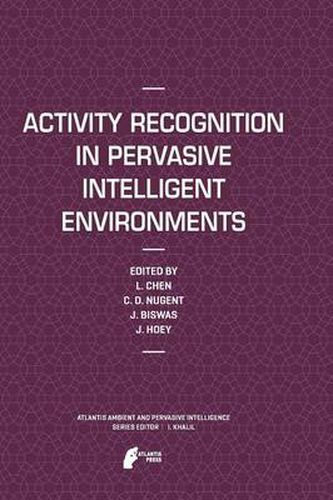Readings Newsletter
Become a Readings Member to make your shopping experience even easier.
Sign in or sign up for free!
You’re not far away from qualifying for FREE standard shipping within Australia
You’ve qualified for FREE standard shipping within Australia
The cart is loading…






This title is printed to order. This book may have been self-published. If so, we cannot guarantee the quality of the content. In the main most books will have gone through the editing process however some may not. We therefore suggest that you be aware of this before ordering this book. If in doubt check either the author or publisher’s details as we are unable to accept any returns unless they are faulty. Please contact us if you have any questions.
This book consists of a number of chapters addressing different aspects of activity recognition, roughly in three main categories of topics. The first topic will be focused on activity modeling, representation and reasoning using mathematical models, knowledge representation formalisms and AI techniques. The second topic will concentrate on activity recognition methods and algorithms. Apart from traditional methods based on data mining and machine learning, we are particularly interested in novel approaches, such as the ontology-based approach, that facilitate data integration, sharing and automatic/automated processing. In the third topic we intend to cover novel architectures and frameworks for activity recognition, which are scalable and applicable to large scale distributed dynamic environments. In addition, this topic will also include the underpinning technological infrastructure, i.e. tools and APIs, that supports function/capability sharing and reuse, and rapid development and deployment of technological solutions. The fourth category of topic will be dedicated to representative applications of activity recognition in intelligent environments, which address the life cycle of activity recognition and their use for novel functions of the end-user systems with comprehensive implementation, prototyping and evaluation. This will include a wide range of application scenarios, such as smart homes, intelligent conference venues and cars.
$9.00 standard shipping within Australia
FREE standard shipping within Australia for orders over $100.00
Express & International shipping calculated at checkout
This title is printed to order. This book may have been self-published. If so, we cannot guarantee the quality of the content. In the main most books will have gone through the editing process however some may not. We therefore suggest that you be aware of this before ordering this book. If in doubt check either the author or publisher’s details as we are unable to accept any returns unless they are faulty. Please contact us if you have any questions.
This book consists of a number of chapters addressing different aspects of activity recognition, roughly in three main categories of topics. The first topic will be focused on activity modeling, representation and reasoning using mathematical models, knowledge representation formalisms and AI techniques. The second topic will concentrate on activity recognition methods and algorithms. Apart from traditional methods based on data mining and machine learning, we are particularly interested in novel approaches, such as the ontology-based approach, that facilitate data integration, sharing and automatic/automated processing. In the third topic we intend to cover novel architectures and frameworks for activity recognition, which are scalable and applicable to large scale distributed dynamic environments. In addition, this topic will also include the underpinning technological infrastructure, i.e. tools and APIs, that supports function/capability sharing and reuse, and rapid development and deployment of technological solutions. The fourth category of topic will be dedicated to representative applications of activity recognition in intelligent environments, which address the life cycle of activity recognition and their use for novel functions of the end-user systems with comprehensive implementation, prototyping and evaluation. This will include a wide range of application scenarios, such as smart homes, intelligent conference venues and cars.